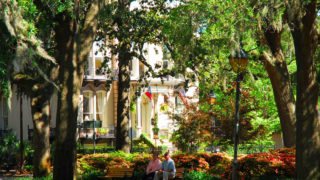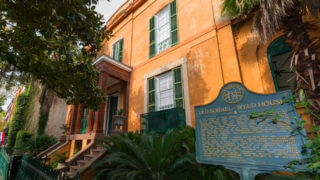Kehoe House
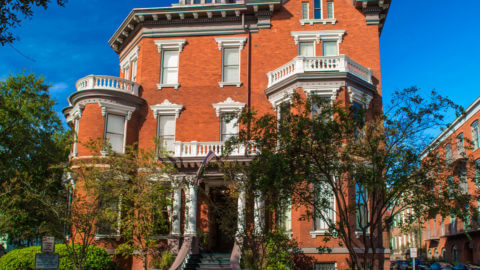
Another gem among the many exquisite historic places in Savannah, the Kehoe House has been meticulously restored to capture its original 1892 glamour. The Renaissance Revival mansion is located in Savannah’s historic district and is now an opulent boutique hotel. Listed on the National Register of Historic Places, the hotel was once the home to William Kehoe and his family.
Now operated as a private bed and breakfast
The ambiance is turn-of-the-century throughout, with beautiful brass and marble chandeliers, a double parlor with two fireplaces, a courtyard garden, music room and fabulous Victorian antiques. To those who visit the hotel, it exudes the elegance and grandeur of its era and offers world-class service and amenities as well.
One of the most notable historic homes in Savannah, the Queen Anne-style Kehoe House was built in 1893. Dewitt Bruyn designed the multi-story brick mansion for William Kehoe, a wealthy businessman. Along with Corinthian columns, the red brick residence features a variegated roofline, double and triple windows and a truncated turret as well as bay windows beneath a parapet. The home is surrounded by porches and balconies.
Brief History of the Kehoe House
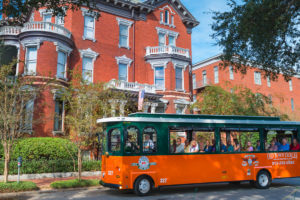
Haunted Happenings Inside the Home
The home is famous for its paranormal activity. While William Kehoe’s presence is reputedly felt in the study, the friendly apparition of his wife Anne has been seen sitting on a bed, writing at a desk and walking the halls of the third floor. It is reported that William also rings the bell to enter the home after hours and turns on the lights in the study. Most of the home’s supernatural activity revolves around children. The Kehoes’ twin boys died at the age of five while playing inside a chimney, which was blocked off and decorated with angels. Their boisterous apparitions can be heard running up and down the halls. Sightings of their ghosts have been reported in the second-floor bedrooms as well. Guests have also heard young voices when no children were present. These phenomena have made the Kehoe House one of the most haunted places in Savannah.
Nearby Attractions
Columbia Square
Located on Habersham Street, Columbia Square like the District of Columbia was named in honor of the female personification of the United States. The park was laid out in 1799. The ornate Wormsloe Fountain adorns the center of the park. The fountain was relocated from the Wormsloe Plantation to the square in 1970.
 Davenport House
Davenport House
Built in 1820, the Federal-style Isaiah Davenport House was the family home and showpiece for Davenport who was a master builder. After the home experienced years of neglect, the Historic Savannah Foundation purchased the building. The preservation group’s first purchase, the mansion has been painstakingly restored and furnished to reflect life in early 19th-century Savannah.
 Owens-Thomas House
Owens-Thomas House
Featuring a columned portico, the Owens-Thomas House is one of Savannah’s few remaining examples of Regency-style architecture. The elegant interior is furnished with period pieces reflecting how the Owens family would have lived in the early 19th century. In addition to an English-inspired garden, the property includes one of the city’s earliest intact slave quarters.

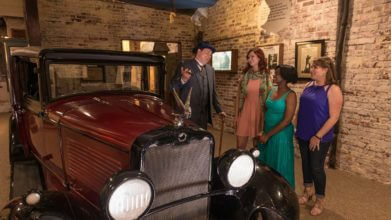
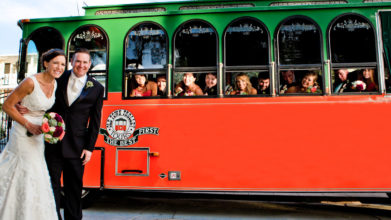
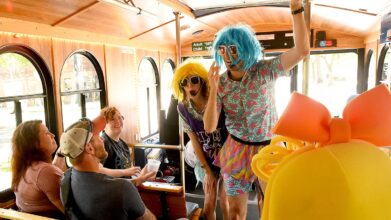
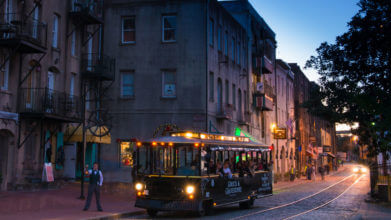
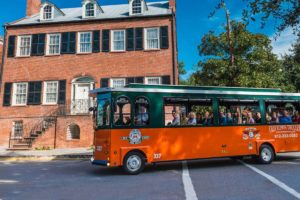 Davenport House
Davenport House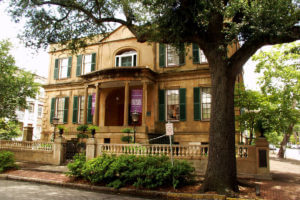 Owens-Thomas House
Owens-Thomas House
